Are you looking to try something new and exciting with your fishing adventures? Trolling fishing is the type of fishing you’re looking for.
How to trolling fishing is a popular and effective technique used by anglers to catch a variety of fish species. This method involves dragging bait or lures behind a moving boat at a controlled speed, allowing anglers to cover a larger area of water while mimicking the natural movement of prey. Trolling fishing offers versatility and excitement, whether you are targeting saltwater game fish like tuna and marlin or freshwater species such as walleye and trout.
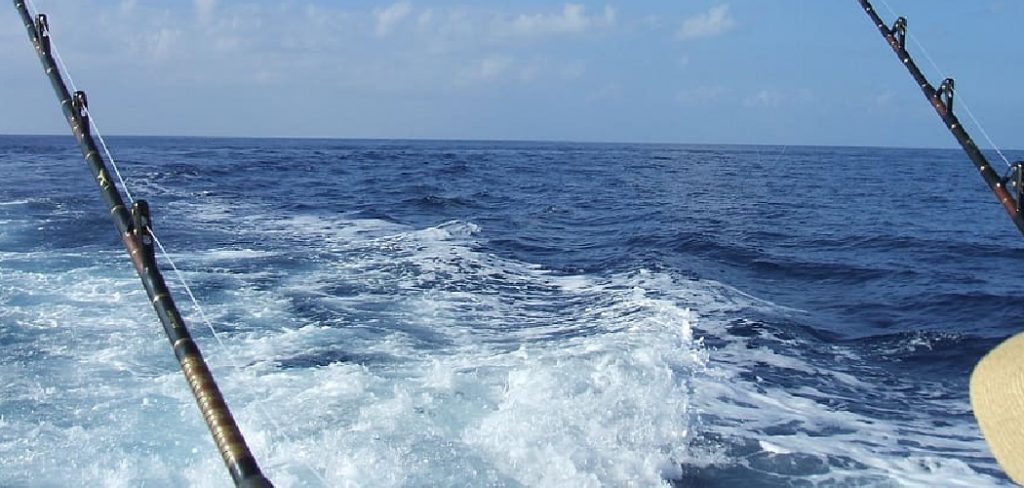
It is a skillful approach that combines the right equipment, knowledge of fish behavior, and an understanding of water conditions to enhance success on the water.
What Are the Benefits of Trolling Fishing?
Trolling fishing offers a wide range of benefits, making it a popular choice among anglers. Some of the main advantages include:
- Covering more Water: With trolling fishing, you can cover a larger water area than other fishing techniques. This allows you to increase your chances of finding and catching fish.
- Versatility: Trolling can be done in both freshwater and saltwater bodies, making it accessible to all types of anglers. Additionally, it can be used to target a variety of fish species.
- Mimicking Natural Movement: By moving the bait or lure behind the boat, you can mimic the natural movement of prey, increasing your chances of attracting fish.
- Effective in Different Water Conditions: Trolling fishing can be done in a wide range of conditions, including calm water, rough seas, and even shallow waters.
These benefits make trolling fishing a versatile and effective technique for all types of anglers, from beginners to experienced fishermen.
What Will You Need?
Before heading out on your trolling fishing adventure, you must ensure you have the right equipment. Some of the necessary items include:
- Trolling Rod and Reel: A trolling rod and reel is a specialized type of fishing gear that is designed to handle heavier lines and larger lures or baits.
- Trolling Line: The Trolling line needs to be strong enough to handle the weight of larger fish species while also being able to withstand the water resistance pressure.
- Lures or Bait: The lure or bait used for trolling fishing will depend on the fish species you are targeting. It’s essential to have various options to see what works best.
- Downriggers or Planers: Downriggers and planers help control the depth at which your lures or baits are trolled.
- Fish Finder: A fish finder is a valuable tool that can help you locate schools of fish, making it easier to target them while trolling.
It’s crucial to have high-quality equipment when trolling fishing as it will improve your chances of success and make for a more enjoyable experience on the water.
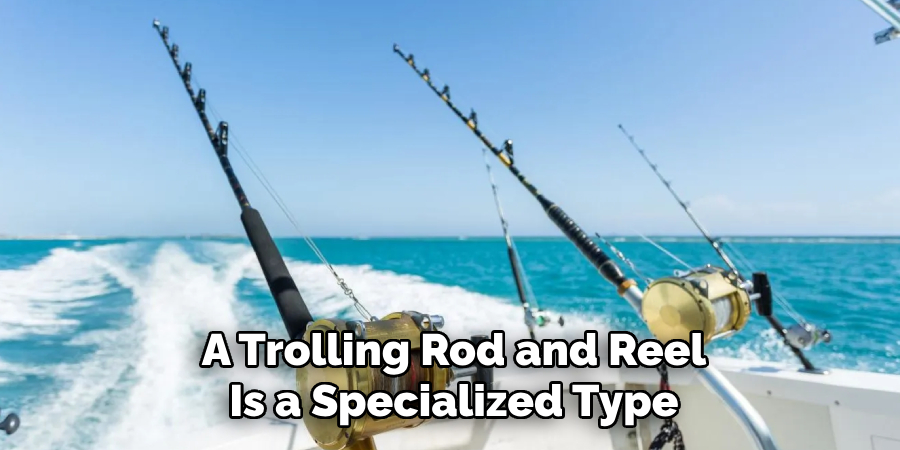
8 Easy Steps on How to Trolling Fishing
Step 1. Choose the Right Location:
When trolling fishing, selecting the right location is critical to your success. Start by researching areas known for the type of fish you want to catch. Coastal waters, deep-sea zones, and large lakes are popular spots for trolling, but each has unique characteristics. Pay attention to factors like water temperature, depth, and the presence of underwater structures such as reefs, ledges, or drop-offs, as these are often ideal habitats for fish.
Utilize navigation charts, maps, or online resources to scout for prime fishing locations. Additionally, talking to local anglers or fishing guides can provide valuable insights into where fish are most active during specific times of the year. Remember, fish are constantly moving, so adaptability and observation play a big role in finding the perfect spot.
Step 2. Select the Appropriate Gear:
Having the right gear is essential for successful trolling fishing. Start by choosing a sturdy fishing rod and reel that can handle the strain of trolling, as this method often involves larger fish. Opt for a reel with sufficient line capacity and durability to manage long-running fish.
Use a high-quality fishing line suited to the type of water and fish you’re targeting, such as monofilament, braided, or fluorocarbon lines. Don’t forget to include a selection of lures or bait that mimic the natural prey of your target species. Additionally, you’ll need trolling weights, downriggers, or planers to help control the depth at which your bait or lures are presented. Ensuring your equipment is in good working condition before heading out can save you time and frustration on the water.
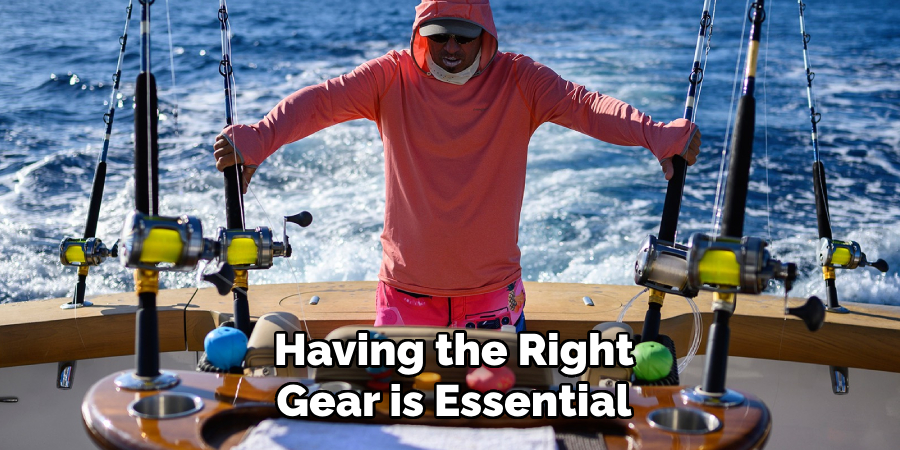
Step 3. Set Up and Deploy Your Line:
Once your gear is selected, it’s time to set up and deploy your fishing line. Attach your bait or lure securely to the line, ensuring it is appropriately rigged to mimic the natural movement of prey.
Adjust your line length and weight according to the depth you want to target, keeping in mind the behavior and habitat of the fish species you’re pursuing. If using a downrigger or planer, set it up to control the precise depth of your bait or lure. When deploying your line, release it slowly and steadily to avoid tangling. Maintain a controlled speed for the boat, as the trolling speed directly impacts how the lure moves and attracts fish. Fine-tune your setup to match the conditions and always check your line regularly for debris or tangles to ensure optimal performance.
Step 4. Monitor and Adjust Your Trolling Strategy:
As you troll, pay close attention to your gear and surroundings. Watch your rod tips for any signs of activity, such as sudden movements or tension, which could indicate a fish has struck. Adjust your trolling speed as needed to match the behavior of the target species or adapt to changing water conditions.
Experiment with different lures, colors, or depths if you are not succeeding, as flexibility can often lead to better results. Use tools like a fish finder to identify promising areas with high activity and refine your approach accordingly. Patience and observation are key during this step to optimize your chances of a successful catch.
Step 5. Reel in and Secure Your Catch:
When you feel a strike, remain calm and take your time reeling in the fish. Start by smoothly lifting the rod tip to set the hook, ensuring it is secure. Maintain consistent tension on the line as you steadily reel in, avoiding sudden jerks that could dislodge the hook. Be prepared for the fish to fight, especially larger ones, and adjust your drag if necessary to prevent the line from snapping.
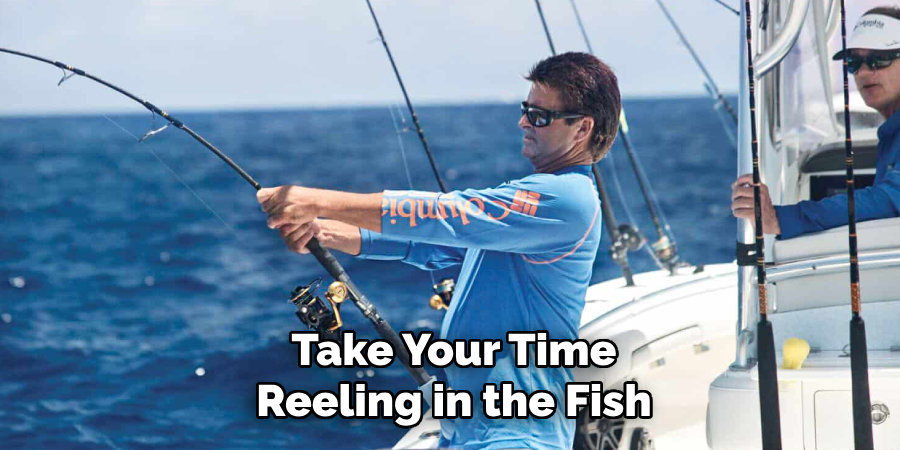
Once the fish is close to the boat, use a landing net or gaff to bring it aboard safely. Handle the fish carefully, whether you’re releasing it back into the water or preparing it for consumption, ensuring ethical fishing practices are observed.
Step 6. Stay Alert and Practice Safety Precautions:
Safety should always be a top priority when trolling fishing. Ensure everyone on board knows where the safety equipment, such as life jackets and fire extinguishers, is located. Check weather conditions before heading out and watch for changes that could impact your trip. Be aware of any potential hazards in the water, such as other boats or submerged objects, and adjust your route accordingly. Additionally, avoid consuming alcohol while operating a boat to prevent accidents.
Step 7. Properly Store Your Gear:
After a successful day of trolling fishing, storing your gear correctly ensures it remains in excellent condition for your next trip. Begin by rinsing your rod reels and tackle them with fresh water to remove salt, dirt, and debris that can cause corrosion or damage. Allow your equipment to dry thoroughly before storing it in a cool, dry place to prevent rust. Securely organize lures, hooks, and lines in tackle boxes to avoid tangles and ensure quick access later.
Disassemble reels for deeper cleaning and apply lubricant to maintain smooth operation. Carefully inspect each item for any signs of wear or damage, replacing broken or worn-out components to avoid issues during future outings. Proper care and storage extend the life of your fishing gear and help maintain consistent performance on the water.
Step 8. Practice Catch and Release:
When trolling fishing, practicing catch and release can be crucial in conserving fish populations and maintaining a sustainable ecosystem. If you plan to release a fish, handle it carefully using wet hands or a rubberized net to minimize damage to its protective slime layer.
Avoid keeping the fish out of the water for an extended period, and remove the hook gently using pliers or a dehooking tool. If the fish is deeply hooked, cutting the line close to the mouth is better than extracting the hook forcefully. Revive the fish by holding it in the water, facing into the current, until it swims away strongly.
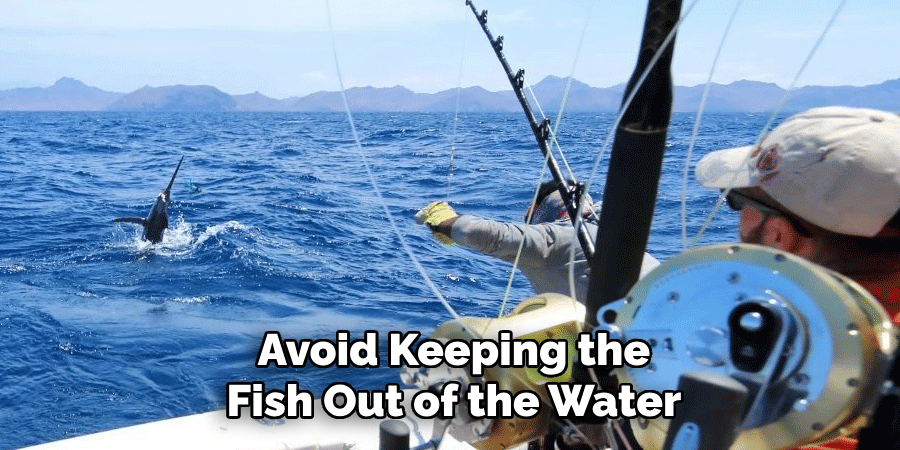
By following these steps and practicing ethical fishing practices, you can enjoy a successful day of trolling fishing while minimizing your environmental impact.
Conclusion
How to trolling fishing is a rewarding and dynamic method that combines strategy, skill, and patience to deliver an exhilarating angling experience.
By mastering the essential steps, from selecting the right gear and understanding water conditions to employing effective trolling techniques and practicing ethical fishing habits, you can enhance your success rate and connection with the aquatic environment. Always remember that responsible fishing ensures the preservation of these precious resources for future generations.
With practice and respect for the environment, trolling fishing can become a productive hobby and a fulfilling way to appreciate the wonders of nature. Happy fishing!
About the Author
Jennifer Branett is the author of Fishy Kayak and an expert in fish-related fields, with over 10 years of experience. Her work blends passion for fishing with a commitment to conservation.
Educational Background
Degree: Bachelor’s in Marine Biology
Institution: University of California, Santa Barbara
Specializations: Aquatic ecosystems, fish behavior, and sustainable practices
Professional Experience
Conservation Projects:
Collaborated with local organizations to restore aquatic habitats
Developed educational programs on sustainable fishing practices
Publications:
Authored articles for fishing magazines and environmental journals
Featured speaker at fishing expos and conservation conferences
Key Areas of Expertise
Fishing Techniques:
Kayak fishing strategies
Freshwater and saltwater fishing methods
Environmental Stewardship:
Advocacy for sustainable fishing
Promoting biodiversity in aquatic environments
Awards and Recognition
Recipient of the [Specific Award Name] for contributions to marine conservation
Recognized as a leading voice in the fishing community by [Organization/Publication Name]
Community Engagement
Workshops and Seminars:
Regularly hosts events to educate anglers on sustainable practices
Engages with youth programs to inspire the next generation of fishers
Online Presence:
Maintains an active blog sharing tips, stories, and conservation efforts
Engages with followers on social media to promote fishing ethics
Personal Interests
Enjoys kayaking in scenic locations
Passionate about photography, capturing the beauty of nature
Advocates for local conservation efforts in her community
